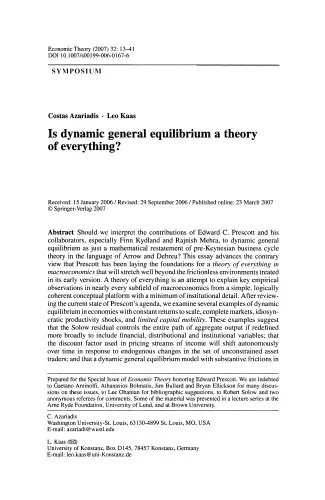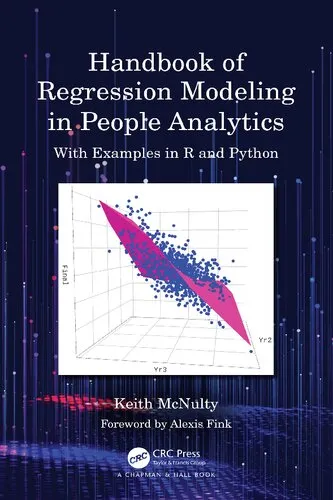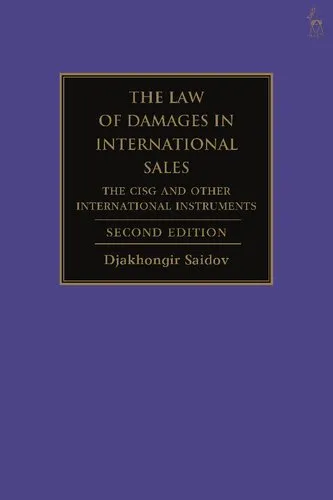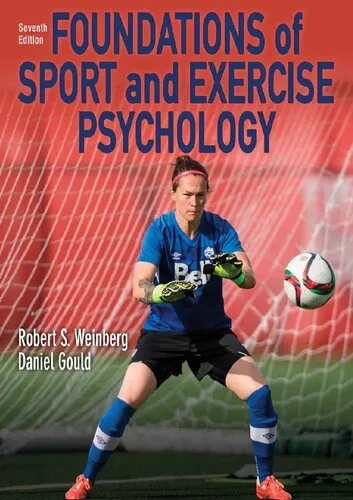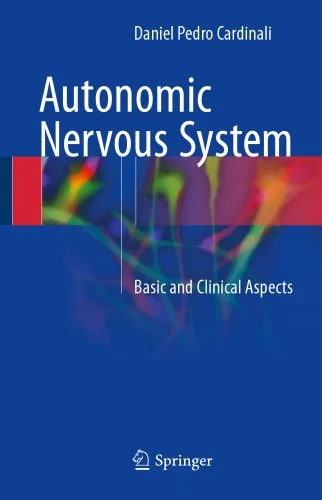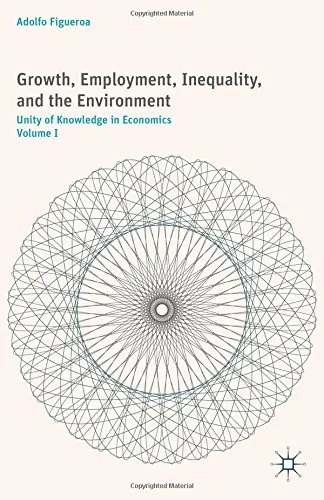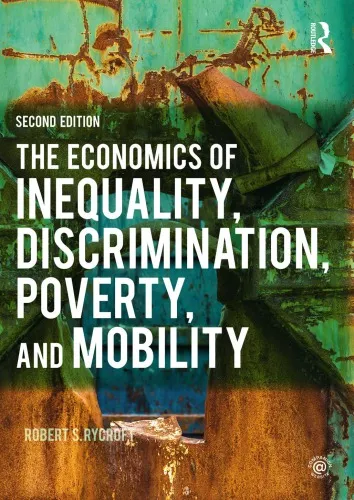Economic Theory
4.6
Reviews from our users

You Can Ask your questions from this book's AI after Login
Each download or ask from book AI costs 2 points. To earn more free points, please visit the Points Guide Page and complete some valuable actions.Related Refrences:
Analytical Summary
The section comprising pages 13—41 of Economic Theory, authored by Costas Azariadis and Leo Kaas, delves into foundational concepts and analytical frameworks that shape modern economic thought. This important excerpt offers a methodical exploration of how individuals, firms, and policy-makers interact within diverse market structures, making it an invaluable resource for serious readers aiming to strengthen their grasp of macroeconomic modeling and general equilibrium analysis.
In these pages, the authors lay out formal models that connect micro-level assumptions to macro-level dynamics. They explore how rational expectations, dynamic optimization, and competitive equilibria form the backbone of coherent economic systems. Through rigorous mathematical exposition and theoretically consistent examples, the text challenges the reader to follow complex reasoning while underscoring the broader implications of economic theory in policy formation and long-term growth.
Although some contextual details—such as the original publication year or any awards received for this work—remain unavailable due to a lack of reliable public sources, the intellectual merit of these chapters is self-evident. Each model builds progressively, enabling readers from varied backgrounds to appreciate the interplay between abstract theory and observed economic outcomes.
Key Takeaways
The content in pages 13—41 of Economic Theory provides a compact yet profound toolkit for understanding economic mechanisms.
First, markets are shown to be complex adaptive systems where equilibrium may shift under policy and technological changes. Second, the rigorous connection between individual choice and aggregate outcomes underscores the potential for well-founded policy interventions. Third, dynamic models illustrate how expectations shape strategic behavior among economic agents.
Fourth, the authors emphasize the use of mathematical precision to resolve conceptual ambiguities. Finally, readers are encouraged to see economic theory not as an isolated academic exercise but as a powerful lens for interpreting and predicting real-world phenomena.
Memorable Quotes
“Economic theory is not merely a set of abstract models—it is a disciplined way of thinking about how societies allocate resources.” Unknown
“Mathematics in economics provides clarity where intuition alone might falter.” Unknown
“Every equilibrium reflects underlying assumptions that must be scrutinized for both relevance and realism.” Unknown
Why This Book Matters
Economic Theorypp.13—41 occupies a distinctive niche in academic literature because it bridges abstract modeling with critical implications for policy and practice.
For economists, policymakers, and advanced students, these pages provide not only theoretical rigor but also a pathway to applying this rigor to real-world challenges. The focus on macroeconomic modeling and general equilibrium ensures that readers comprehend the delicate balance between theoretical elegance and empirical applicability.
This section also serves as a reminder that economic systems cannot be understood in isolation. Instead, they must be viewed as dynamic entities influenced by expectations, technological change, and institutional structures—all themes deftly handled by Azariadis and Kaas.
Inspiring Conclusion
To engage deeply with Economic Theorypp.13—41 is to embark on a journey of intellectual rigor, connecting precise mathematical constructs to the behavior of individuals and markets.
For academics, professionals, and serious readers, these pages stand as a compact yet comprehensive contribution to the understanding of economic structures and their evolution. They invite critical thinking, encourage scholarly debate, and provide a framework that remains relevant to both contemporary analysis and future challenges.
The next step is yours: read these chapters in detail, share them with colleagues, and discuss their implications in your own work. In doing so, you will carry forward the spirit of inquiry that lies at the heart of Economic Theorypp.13—41.
Free Direct Download
You Can Download this book after Login
Accessing books through legal platforms and public libraries not only supports the rights of authors and publishers but also contributes to the sustainability of reading culture. Before downloading, please take a moment to consider these options.
Find this book on other platforms:
WorldCat helps you find books in libraries worldwide.
See ratings, reviews, and discussions on Goodreads.
Find and buy rare or used books on AbeBooks.
1281
بازدید4.6
امتیاز0
نظر98%
رضایتReviews:
4.6
Based on 0 users review
Questions & Answers
Ask questions about this book or help others by answering
No questions yet. Be the first to ask!
